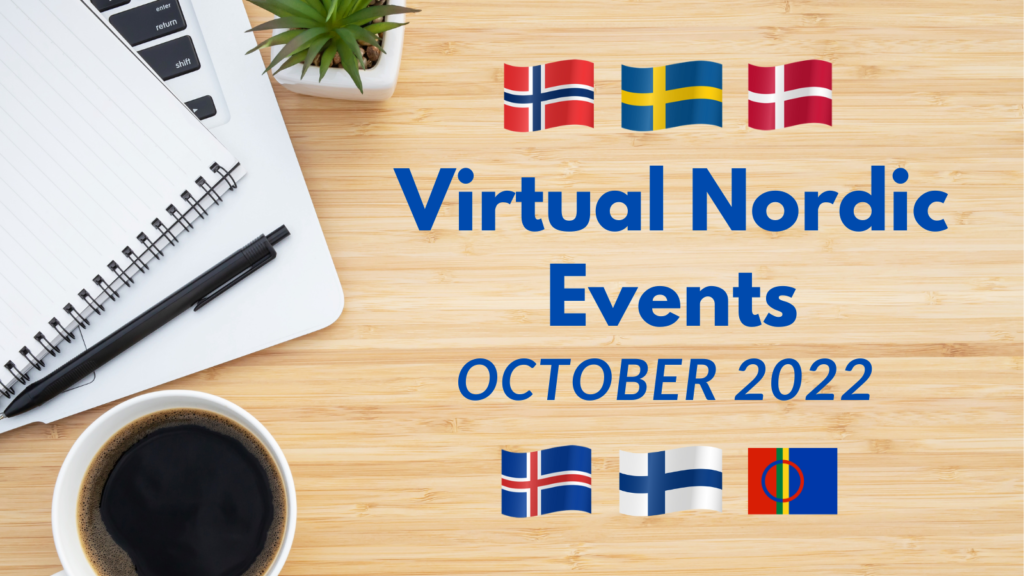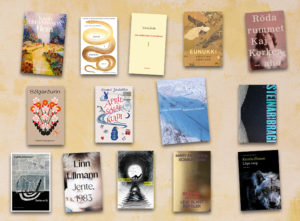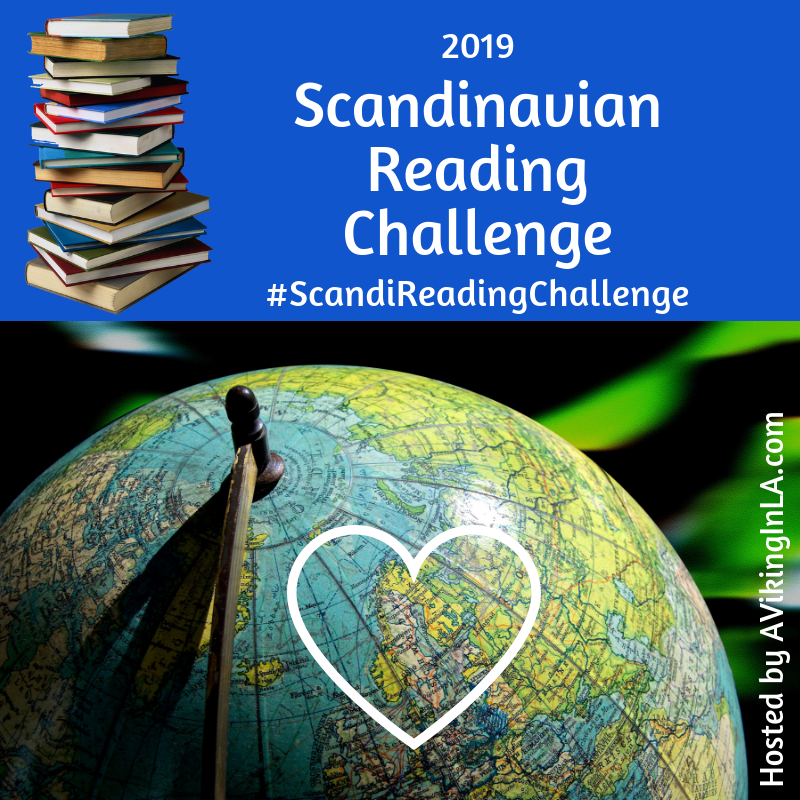Last month was a very mixed month of reading on a variety of fronts — genres, settings, and enjoyment. Luckily, I enjoyed the second in a series as much as the first; but unfortunately, I had to quit a multiple award winning book. Continue reading
Tag Archives: Nordic Council Lit Prize
Nordic Lit Reading Challenge 2023: My Top Picks for Nordic Council Literature Prize Winners
The 2023 Nordic Literature Reading Challenge is underway, and one of the prompts for the challenge is to read a winner of the Nordic Council Literature Prize. Awarded since 1962 to a work of fiction written in one of the Nordic languages, the mission of the Nordic Council Literature Prize is to “generate interest in the literature and language of neighbouring countries, and in the Nordic cultural community”.
This is a somewhat tricky prompt because not all of the winners have English translations, and of those that do, they aren’t always readily available. Of course you can read a winner in the original language, but here’s a list of winners with English translations in case that’s not possible. In planning my own reading for this year’s challenge, I picked out the following books from each of the Nordic countries to consider for this prompt.
DENMARK – The Prophets of Eternal Fjord: A Novel by Kim Leine, translated from the Danish by Martin Aitken (novel, 500+ pages)
About the winning piece from the Nordic Council (2013):
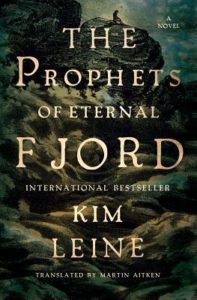 “Kim Leine’s great epic, ‘Profeterne i Evighedsfjorden’, is the story of the Danish priest Morten Falck who travels to Greenland at the end of the 1700s. Through this unfolds the tale of Danish colonisation as a completely crazy and meaningless project. The Danish officials try to keep hold of power and customs but are plagued by homesickness and resignation. Grief and anger smoulders amongst the Greenlanders, and some of them seize Christianity and the European ideas of freedom as an inspiration for rebellion against colonial power. But as well as being a critical, historical novel that reminds us of Denmark’s problematic past as a colonial power, the book is also a depiction of dirt as mankind’s basic element.”
“Kim Leine’s great epic, ‘Profeterne i Evighedsfjorden’, is the story of the Danish priest Morten Falck who travels to Greenland at the end of the 1700s. Through this unfolds the tale of Danish colonisation as a completely crazy and meaningless project. The Danish officials try to keep hold of power and customs but are plagued by homesickness and resignation. Grief and anger smoulders amongst the Greenlanders, and some of them seize Christianity and the European ideas of freedom as an inspiration for rebellion against colonial power. But as well as being a critical, historical novel that reminds us of Denmark’s problematic past as a colonial power, the book is also a depiction of dirt as mankind’s basic element.”
Why I’m considering it: I’m intrigued by this selection due to the time and place of the setting, both of which are new to me, and I have no familiarity with this story of Denmark’s past. On top of that, it’s a multiple prize-winning book. Besides winning the Nordic Council Literature Prize in 2013, it won the Danish literature prize De Gyldne Laurbær in 2012. It also made the shortlist for the Dublin Literature Award in 2017. This book would be an option for two of the prompts for the Nordic Lit Reading Challenge!
FINLAND – Purge: A Novel by Sofi Oksanen, translated from the Finnish by Lola Rogers (novel, 417 pages)
About the winning piece from the Nordic Council (2010):
 “Her [Sofi Oksanen’s] third novel, Purge, is about the Soviet occupation of Estonia and its consequences. Unfortunately, it is also very much of current interest with its stories about human trafficking around the Baltic. The book’s two time levels are 1992 – one year after Estonia won its independence – and the 1940s – when tens of thousands of Estonians were deported to Siberia and agriculture was collectivised. On a summer morning in 1992, old Aliide Truu finds an exhausted and confused young woman in her vegetable garden. This Zara has been tricked away from her home in Vladivostok to work as a sex worker in Berlin. On the way to Tallinn where she was supposed to start selling her body to Finnish sex tourists, she manages to escape.”
“Her [Sofi Oksanen’s] third novel, Purge, is about the Soviet occupation of Estonia and its consequences. Unfortunately, it is also very much of current interest with its stories about human trafficking around the Baltic. The book’s two time levels are 1992 – one year after Estonia won its independence – and the 1940s – when tens of thousands of Estonians were deported to Siberia and agriculture was collectivised. On a summer morning in 1992, old Aliide Truu finds an exhausted and confused young woman in her vegetable garden. This Zara has been tricked away from her home in Vladivostok to work as a sex worker in Berlin. On the way to Tallinn where she was supposed to start selling her body to Finnish sex tourists, she manages to escape.”
Why I’m considering it: Sofi Oksanen is a Finnish author (Finnish father and Estonian mother) who first appeared on my radar for her latest novel Dog Park (2021 in translation by Owen Frederick Witesman). The Soviet occupation of Estonia is a little known topic to me, and I always enjoy a good dual-timeline novel.
ICELAND – The Blue Fox: A Novel by Sjón, translated from the Icelandic by Victoria Cribb (novel, 130 pages)
About the winning piece from the Nordic Council (2005):
 “The Blue Fox is a novel about an Icelandic pastor and a fox hunt. Sjón makes use of the Icelandic folktale to tell his story. One of the principal characters is the pastor Baldur Skuggason. He has an evil, dark side to his character. Another key figure is the strange offspring of a cat and a fox following the story – Sjón’s style has elements of a very unique Icelandic sense of humour. The Blue Fox is a short novel with a few sections. Some pages only consist of a single written line, surrounded by large white surfaces calling to mind the Icelandic expanse. This concreteness can be said to balance on the line between prose and poetry. ‘Skugga-Baldur’ is also a contemporary novel which brings up some of today’s ethical questions. Are the weak, deformed babies with developmental disorders welcome in a world where they could have been discarded already prior to birth?”
“The Blue Fox is a novel about an Icelandic pastor and a fox hunt. Sjón makes use of the Icelandic folktale to tell his story. One of the principal characters is the pastor Baldur Skuggason. He has an evil, dark side to his character. Another key figure is the strange offspring of a cat and a fox following the story – Sjón’s style has elements of a very unique Icelandic sense of humour. The Blue Fox is a short novel with a few sections. Some pages only consist of a single written line, surrounded by large white surfaces calling to mind the Icelandic expanse. This concreteness can be said to balance on the line between prose and poetry. ‘Skugga-Baldur’ is also a contemporary novel which brings up some of today’s ethical questions. Are the weak, deformed babies with developmental disorders welcome in a world where they could have been discarded already prior to birth?”
Why I’m considering it: I’ve been curious about Sjón for a while. Besides writing novels, he’s a poet, screenwriter, and involved in the music scene. In 2016, he was the third writer chosen to contribute to the Future Library project.
NORWAY – The Ice Palace by Tarjei Vesaas, translated from the Norwegian by Elizabeth Rokkan (novel, 144 pages)
About the winning piece from the Nordic Council (1964):
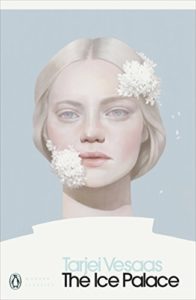 “The Ice Palace is a novel with two 11-year-old girls as the protagonists: extrovert Siss and quiet, introvert Unn. The day after a meeting of the girls at which Unn revealed that she is carrying a dark secret, Unn travels to the ice palace. This is a huge ice formation which builds up at a waterfall in winter-time. As it turns out to be made up of several ice rooms, she walks into the palace. Unn is enthralled by the beauty of the rooms, but in the seventh room she loses her way and cannot find her way out. She freezes to death with Siss’s name on her lips. The novel concludes with the story of Siss’s life and her reaction to Unn’s death. Siss now becomes the quiet and lonely one. She goes into an inner ice palace until she is finally redeemed and can move on into adulthood with a profound insight.”
“The Ice Palace is a novel with two 11-year-old girls as the protagonists: extrovert Siss and quiet, introvert Unn. The day after a meeting of the girls at which Unn revealed that she is carrying a dark secret, Unn travels to the ice palace. This is a huge ice formation which builds up at a waterfall in winter-time. As it turns out to be made up of several ice rooms, she walks into the palace. Unn is enthralled by the beauty of the rooms, but in the seventh room she loses her way and cannot find her way out. She freezes to death with Siss’s name on her lips. The novel concludes with the story of Siss’s life and her reaction to Unn’s death. Siss now becomes the quiet and lonely one. She goes into an inner ice palace until she is finally redeemed and can move on into adulthood with a profound insight.”
Why I’m considering this: I have not read any of Tarjei Vesaas’ works yet, but he is arguably one of Norway’s greatest writers. His authorship spans from 1923 to 1970. He won many awards during his lifetime and was even nominated for the Nobel Prize in Literature 57 times. The Ice Palace and The Birds are his most famous works.
SWEDEN – Blackwater: A Novel by Kerstin Ekman, translated from the Swedish by Joan Tate (novel, 448 pages)
About the winning piece from the Nordic Council (1994):
 “Blackwater is a detective novel set in the town of Svartvattnet in Norrland. It depicts a woman from Stockholm, who moves in with her boyfriend in the town to work as a teacher in a commune. However, events revolve around a double homicide that remains unsolved and the consequences of this trauma for the people in the town. Kerstin Ekman’s story invites many reading styles; it can be read as a Bildungsroman, as a critical analysis of gender roles, as a mythical story with symbolic elements, but, of course, also simply as a thrilling detective novel.”
“Blackwater is a detective novel set in the town of Svartvattnet in Norrland. It depicts a woman from Stockholm, who moves in with her boyfriend in the town to work as a teacher in a commune. However, events revolve around a double homicide that remains unsolved and the consequences of this trauma for the people in the town. Kerstin Ekman’s story invites many reading styles; it can be read as a Bildungsroman, as a critical analysis of gender roles, as a mythical story with symbolic elements, but, of course, also simply as a thrilling detective novel.”
Why I’m considering it: I read Kerstin Ekman’s God’s Mercy a few years ago. I enjoyed the descriptive setting of rural northern Sweden in the early 1900s. Blackwater also takes place in a remote, northern setting, but in the later part of the 1900s. I’m intrigued by the many ways that Blackwater can be read, but most of all by its crime novel aspect. Besides winning the Nordic Council Literature Prize in 1994, it received the prestigious Swedish August Prize and the Best Swedish Crime Novel Award in 1993.
Which of these would you read first? Are there other Nordic Council Literature Prize winners that you’ve read and would recommend?
Disclaimer: AVikingInLA is a participant in the Amazon Services LLC Associates Program, an affiliate advertising program designed to provide a means for sites to earn advertising fees by advertising and linking to amazon.com.
Introducing Reading Challenge 2023: Nordic Literature
My passion project, the yearly Scandinavian Reading Challenge, “celebrated” its fifth year in 2022. I started it for myself (and anyone else who wanted to join) as an incentive to get to know Scandinavian authors better and to read Scandinavian books on a more regular basis. Every year I read 12+ Scandinavian (plus some other Nordic) books checking off various prompts.
This past year was the most intensive and focused year of them all. Inspired by the Book Girls’ Decades Reading Challenge, I read through the decades of the last century in Norway. A major component of this challenge was researching Norway’s history and finding books for each of the decades. It was enjoyable and satisfying but extremely time-consuming, and it took a toll on researching and reading books from other parts of the world, also a great passion of mine.
This past month has been an opportunity to evaluate how my reading was in 2022, in particular how it compared to my actual reading intentions for 2022. There were certainly some worthwhile highlights!
Highlights of 2022:
- Learning about Norway’s 20th century history through books taking places all over Norway
- Discovering Roy Jacobsen’s The Barrøy Chronicles series and loving it
- Finally reading Norwegian authors Zeshan Shakar and Simon Stranger and looking forward to reading more of their work
Goals for 2023:
- Read more new-to-me Nordic authors
- Read more books in translation, especially women in translation, from around the world
- As always, read off my shelves, both physical and digital
- And also as always, try to share reading on Instagram more regularly
Reading Challenge for 2023 – Join Me!
 In 2023, with my goals in mind, I’m taking a wider but less labor-intensive approach with the reading challenge. First of all, I’ve expanded the scope of the reading challenge to cover the whole Nordic region: Denmark, Finland, Iceland, Norway, and Sweden which includes the autonomous territories of Greenland, Faroe Islands, and Åland, as well as Sápmi, the land of the indigenous Sámi people (which overlaps northern Norway, Sweden, Finland, and Kola Peninsula of Russia). Secondly, I’m limiting myself to a “mini challenge” with only six prompts, one for each of the Nordic countries plus Sápmi.
In 2023, with my goals in mind, I’m taking a wider but less labor-intensive approach with the reading challenge. First of all, I’ve expanded the scope of the reading challenge to cover the whole Nordic region: Denmark, Finland, Iceland, Norway, and Sweden which includes the autonomous territories of Greenland, Faroe Islands, and Åland, as well as Sápmi, the land of the indigenous Sámi people (which overlaps northern Norway, Sweden, Finland, and Kola Peninsula of Russia). Secondly, I’m limiting myself to a “mini challenge” with only six prompts, one for each of the Nordic countries plus Sápmi.
I invite you to join me in the 2023 Nordic Literature Reading Challenge by reading six unique Nordic books. For each of the five Nordic countries, match it with a different prompt, as listed below. For the Sámi selection, the prompt is free choice. Any book by or about the Sámi people and their history and culture, fiction or nonfiction, is fine.
Prompts
-
A winner of the Nordic Council Literature Prize
The Nordic Council’s Literature Prize has been awarded since 1962 and is awarded to a work of fiction written in one of the Nordic languages. It can be a novel, a drama, a collection of poems, a collection of short stories or a collection of essays that meet high literary and artistic requirements. View a list of winners with English translations.
-
A longlist nominee for the Dublin Literary Award
The Dublin Literary Award has been presented annually since 1996 to a novel written in English or translated into English. The Award promotes excellence in world literature and is solely sponsored by Dublin City Council and administered by Dublin City Libraries. Nominations are submitted by libraries in major cities throughout the world. See a catalog of all nominees.
-
By or about a marginalized group in the Nordic region — indigenous, immigrant, minority, etc
-
Nonfiction — by a Nordic author or about a Nordic region
-
Nordic Noir — crime fiction by a Nordic author set in the Nordic region
-
Sámi Literature — free choice
This year I still want to expand my Scandinavian reading, but I also want more opportunity and time to venture beyond those borders. I want to enjoy books in a more relaxed way and read more of what I already have on my shelf, both physical and digital shelves, both for this challenge and the wider world.
Will you join me in adding some Nordic books or authors to your reading list this year?
October 2022: Virtual Nordic Events Plus Art, Music, & Film in SoCal
Happy fall! The offerings for virtual Nordic events continue with presentations, cooking classes, book talks, and book clubs. If you’re a reader interested in seeing what online Nordic book clubs around the country are reading, visit my page Online Nordic Book Club Meetings to see reading selections and meeting dates. In addition to the virtual offerings, this month also offers some exciting in-person art, music, and film events in Southern California.
A special virtual event happening this month is Scandinavia House’s literary series with nominees for the 2022 Nordic Council Literature Prize. This prize has been awarded annually since 1962 to a work of fiction (poetry, prose, or drama) written in one of the Nordic languages. This year’s nominees span the entire Nordic region with works from all countries and language areas. The winner will be announced on 1 November in Helsinki, Finland.
In-Person Experiences
Are you local to the Los Angeles area? The Los Angeles County Museum of Art (LACMA) presents a new exhibition, Scandinavian Design and the United States, 1890–1980, co-organized by the LACMA and the Milwaukee Art Museum in collaboration with the Nationalmuseum Sweden and the Nasjonalmuseet in Norway. It is the first exhibition to examine the extensive design exchanges between the United States and the Nordic countries (Denmark, Finland, Iceland, Norway, and Sweden) during the 20th century. It will be open October 9, 2022 through February 5, 2023.

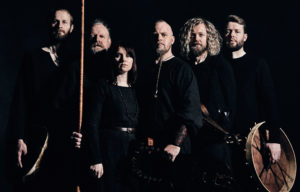
Two Norwegian musical performances will be in the area next month. First Norwegian pop star Sigrid will be in California as part of her “How To Let Go” tour. She’ll be performing with guest Ber first in San Francisco at Bimbo’s 365 Club on October 11, followed by October 12 in Los Angeles at The Novo, and then October 13 in San Diego at Music Box. Wardruna, a Norwegian “music constellation dedicated to creating musical renditions of ancient Norse and Nordic traditions” will be in California November 1 through 4 with concerts in Oakland (Nov. 1), El Cajon (Nov. 2), and Los Angeles (Nov. 4).
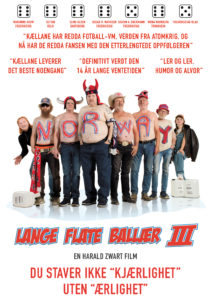
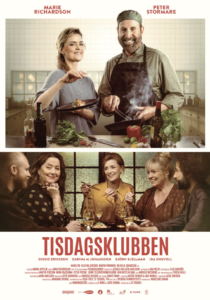
Another special event happening this month is the Newport Beach Film Fest at which both a Norwegian film and a Swedish film are being screened on Tuesday, October 18. Either watch the Norwegian film Long Flat Balls III: Broken Promises directed by Harald Zwart (followed by Q&A with cast and crew) or the Swedish film Tisdagsklubben (Food and Romance) directed by Annika Appelin, and then if you’d like, attend the Newport Beach Film Festival’s European Showcase Celebration honoring the best in European filmmaking.
What’s on your calendar for October?
The Way Further West (Sunday, October 2, 1:00-2:15 p.m. CT)
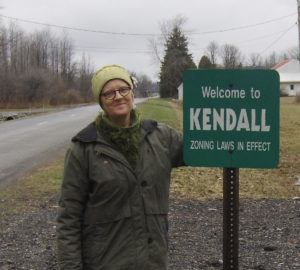 Join Vesterheim and the Slooper Society of America for this free 75-minute webinar, open to the public. Norwegian storyteller Anne Elisebeth Skogen will join the webinar from Ryfylkemuseet at Sand, Norway, to tell the story The Way Further the West. This story is the sequel to the program With Restauration through Hell Gate to the Promised Land, which Anne Elisebeth presented online with Vesterheim in October 2020. The first part of the story told about the initial Norwegian emigrant entourage that left Stavanger, Norway, on July 4, 1825. During The Way Further West, you will hear about what awaited the immigrants in Kendall, New York, and how their lives turned out there. Then you will follow them in new upheavals and their travels further west. Where did they settle and what happened to them? Storyteller Anne Elisebeth Skogen has followed in the footsteps of several of the Sloopers herself, and she looks forward to sharing their story with you.
Join Vesterheim and the Slooper Society of America for this free 75-minute webinar, open to the public. Norwegian storyteller Anne Elisebeth Skogen will join the webinar from Ryfylkemuseet at Sand, Norway, to tell the story The Way Further the West. This story is the sequel to the program With Restauration through Hell Gate to the Promised Land, which Anne Elisebeth presented online with Vesterheim in October 2020. The first part of the story told about the initial Norwegian emigrant entourage that left Stavanger, Norway, on July 4, 1825. During The Way Further West, you will hear about what awaited the immigrants in Kendall, New York, and how their lives turned out there. Then you will follow them in new upheavals and their travels further west. Where did they settle and what happened to them? Storyteller Anne Elisebeth Skogen has followed in the footsteps of several of the Sloopers herself, and she looks forward to sharing their story with you.
The Nordic Council Literature Prize Nominees: Finland (Tuesday, October 4, 1:00 p.m. ET, Free)
One of this year’s Nordic Council Literature Prize nominees from Finland is Kaj Korkea-aho’s Röda rummet (Red Room, 2021). Korkea-aho, a Finnish-Swedish author, columnist, and comedian, will discuss his novel with critic and essayist Sara Abdollahi. This event will take place as a Zoom webinar. You may ask questions in the chat or send them in advance to info@amscan.org. Registration is required; please sign up at the link above. This conversation will be recorded and available later to stream on their Virtual Programming page and on their YouTube channel.
Vesterheim Benefit Auction (October 8, 12:00 p.m. CT – October 16, 9:00 p.m. CT)
 Items are available to view now at www.biddingforgood.com/vest-auction. Each year this auction is full of one-of-a-kind folk art by artists working in the Norwegian tradition. Many of the pieces in the Benefit Auction are donated by Vesterheim Gold Medalists and exhibition ribbon winners from Vesterheim’s annual judged competition, The National Norwegian-American Folk Art Exhibition. Proceeds from the auction benefit Vesterheim’s Folk Art School, which has provided classes since 1967 in fiber arts, woodworking, painting, cooking, jewelry, blacksmithing, knifemaking, and more.
Items are available to view now at www.biddingforgood.com/vest-auction. Each year this auction is full of one-of-a-kind folk art by artists working in the Norwegian tradition. Many of the pieces in the Benefit Auction are donated by Vesterheim Gold Medalists and exhibition ribbon winners from Vesterheim’s annual judged competition, The National Norwegian-American Folk Art Exhibition. Proceeds from the auction benefit Vesterheim’s Folk Art School, which has provided classes since 1967 in fiber arts, woodworking, painting, cooking, jewelry, blacksmithing, knifemaking, and more.
Pears in the Nordic Kitchen (Saturday, October 8, 3:00-5:00 p.m. CT)
 Join Vesterheim and Kristi Bissell of True North Kitchen for a delicious afternoon of cooking and baking with pears. Begin by making a fragrant Roasted Pear Compote with Cardamom, Vanilla, and Fresh Ginger, and then Kristi will show you how to turn that compote into a savory appetizer with blue cheese and hazelnuts and a show stopping pear bundt cake.
Join Vesterheim and Kristi Bissell of True North Kitchen for a delicious afternoon of cooking and baking with pears. Begin by making a fragrant Roasted Pear Compote with Cardamom, Vanilla, and Fresh Ginger, and then Kristi will show you how to turn that compote into a savory appetizer with blue cheese and hazelnuts and a show stopping pear bundt cake.
New Nordic Grain Bowl (Sunday, October 9, 4:00-5:30 p.m. CT)
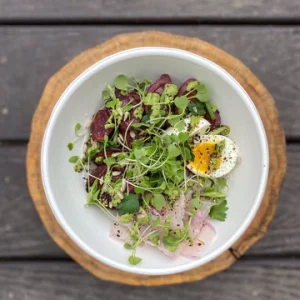 Join Vesterheim and instructor Hannah Garry in making a delicious grain bowl featuring traditional Nordic ingredients like barley, dill, and beets that makes for the perfect dinner party offering or lunch on the go. Use fresh vegetables that are in season in your region to top the bowl. Each participant’s meal will be a beautiful reflection of their own local food web. Class participants will also learn to make a creamy, vegan, herb-packed dressing that can be used on just about anything, as well as a Nordic-inspired apple cocktail (or mocktail) perfect for early fall.
Join Vesterheim and instructor Hannah Garry in making a delicious grain bowl featuring traditional Nordic ingredients like barley, dill, and beets that makes for the perfect dinner party offering or lunch on the go. Use fresh vegetables that are in season in your region to top the bowl. Each participant’s meal will be a beautiful reflection of their own local food web. Class participants will also learn to make a creamy, vegan, herb-packed dressing that can be used on just about anything, as well as a Nordic-inspired apple cocktail (or mocktail) perfect for early fall.
The Nordic Council Literature Prize Nominees: Faroe Islands (Tuesday, October 11, 1:00 p.m. ET, Free)
One of this year’s Nordic Council Literature Prize nominees is Faroe Islands’ Beinir Bergsson’s poetry collection Sólgarðurin (Forlagið Eksil, 2021). In this talk, Bergsson will discuss the collection with translator Randi Ward, a 2021 ASF Translation Prizewinner. This event will take place as a Zoom webinar. You may ask questions in the chat or send them in advance to info@amscan.org. Registration is required; please sign up at the link above. This conversation will be recorded and available later to stream on their Virtual Programming page and on their YouTube channel.
Nordic Spirit Classics’ Second Friday Series—Margi Preus & West of the Moon and Other Places You Can’t Get Get to with GPS (Friday, October 14, 7:30 p.m. PT)
 Join the Scandinavian American Cultural & Historical Foundation in Thousand Oaks, CA, for a live virtual presentation by children’s author Margi Preus from Duluth, Minnesota. An old family diary, true immigrant stories, and Scandinavian folk and fairy tales combine to tell the story of West of the Moon, a “mesmerizing tale of Astri’s treacherous and harrowing mid-19th century emigration to America.” (Booklist, starred review). Preus’s research into Norwegian immigration led her to startling revelations about the role of women healers, the relationship between a common 19th century childhood ailment and the belief in changelings, and the reverence and fear our Norwegian ancestors had for The Black Book, “whose pages teach how to recover lost goods, find buried treasure, turn back the attacks of snakes and dogs, and more.” Preus will discuss how she combined history, fiction, and folklore in this novel and may give a sneak preview of her brand new book Windswept, also inspired by Norwegian fairy tales and populated by trolls. Participation is free; registration is required.
Join the Scandinavian American Cultural & Historical Foundation in Thousand Oaks, CA, for a live virtual presentation by children’s author Margi Preus from Duluth, Minnesota. An old family diary, true immigrant stories, and Scandinavian folk and fairy tales combine to tell the story of West of the Moon, a “mesmerizing tale of Astri’s treacherous and harrowing mid-19th century emigration to America.” (Booklist, starred review). Preus’s research into Norwegian immigration led her to startling revelations about the role of women healers, the relationship between a common 19th century childhood ailment and the belief in changelings, and the reverence and fear our Norwegian ancestors had for The Black Book, “whose pages teach how to recover lost goods, find buried treasure, turn back the attacks of snakes and dogs, and more.” Preus will discuss how she combined history, fiction, and folklore in this novel and may give a sneak preview of her brand new book Windswept, also inspired by Norwegian fairy tales and populated by trolls. Participation is free; registration is required.
Meet the Author: Nancy Marie Brown, Looking for the Hidden Folk (Sunday, October 16, 1:00-2:00 p.m. PST)
 Join author Nancy Marie Brown in virtual conversation with filmmaker Sara Dosa, as she discusses her book, Looking for the Hidden Folk: How Iceland’s Elves Can Save the Earth. In exploring how Icelanders interact with nature—and their idea that elves live among us—Brown shows us how altering our perceptions of the environment can be a crucial first step toward saving it.
Join author Nancy Marie Brown in virtual conversation with filmmaker Sara Dosa, as she discusses her book, Looking for the Hidden Folk: How Iceland’s Elves Can Save the Earth. In exploring how Icelanders interact with nature—and their idea that elves live among us—Brown shows us how altering our perceptions of the environment can be a crucial first step toward saving it.
The Nordic Council Literature Prize Nominees: Iceland (Tuesday, October 18, 1:00 p.m. ET, Free)
One of this year’s Nordic Council Literature Prize nominees from Iceland is Elísabet Jökulsdóttir’s Aprílsólarkuldi. She will discuss her novel with translator Larissa Kyzer. This event will take place as a Zoom webinar. You may ask questions in the chat or send them in advance to info@amscan.org. Registration is required; please sign up at the link above. This conversation will be recorded and available later to stream on their Virtual Programming page and on their YouTube channel.
Cooking Class: Swedish Meatballs (Tuesday, October 18, 4:00-5:00 p.m. CT)
Join Swedish American Museum in Chicago, IL, for a cooking class to learn how to make variations to the Swedish meatball. What other Swedish dishes can be prepared with similar ingredients? You will receive the recipe in advance. You can then either cook alongside or watch and try later. It is an interactive Zoom so you will be able to ask questions.
The Nordic Council Literature Prize Nominees: Sámi Language (Thursday, October 20, 1:00 p.m. ET, Free)
One of this year’s Nordic Council Literature Prize nominees is Sámi language areas’ Mary Ailonieida Sombán Mari’s poetry collection Beaivváš mánát (Mondo Books, 2020). It draws readers into the Sámi experience of abuse of power, racism, and contempt on the part of public authorities. Written in two languages — Norwegian in the first part and Northern Sámi in the second — the collection empowers Sámi readers while offering insight to non-Sámi readers through its portrayal of moments in time. The author will discuss the collection with moderator Lisa Monica Aslaksen. This event will take place as a Zoom webinar. You may ask questions in the chat or send them in advance to info@amscan.org. Registration is required; please sign up at the link above. This conversation will be recorded and available later to stream on their Virtual Programming page and on their YouTube channel.
Demo: Fall Fika Favorites with Kristi Bissell (Thursday, October 20, 1:00 p.m. CT)
 Apples, squash, and warm spices—what more do you need for fabulous fall treats? Join American Swedish Institute and Kristi Bissell of True North Kitchen for three delicious fall fika favorites to add to your baking repertoire. Kristi will demonstrate her takes on the Swedish apple cake, a sweet and quick Pumpkin Rye Bread with Cinnamon Sugar topping, and her grandmother’s pepparkakor (ginger snaps) recipe. This class is designed as a demonstration, so students can watch the entire process and ask questions before tackling the recipes at home at a later date. The recipe packet will be shared via email and available for download one week in advance.
Apples, squash, and warm spices—what more do you need for fabulous fall treats? Join American Swedish Institute and Kristi Bissell of True North Kitchen for three delicious fall fika favorites to add to your baking repertoire. Kristi will demonstrate her takes on the Swedish apple cake, a sweet and quick Pumpkin Rye Bread with Cinnamon Sugar topping, and her grandmother’s pepparkakor (ginger snaps) recipe. This class is designed as a demonstration, so students can watch the entire process and ask questions before tackling the recipes at home at a later date. The recipe packet will be shared via email and available for download one week in advance.
Looking Across the Atlantic: Swedish-American Relations in the 20th Century (Thursday, October 20, 6:00 p.m. ET, Free)
Join the House of Sweden in Washington, DC, for a panel on Swedish-American relations and how ideas, conceptions and images travel between the two countries. Even though Sweden and the United States are separated by an entire ocean, the two nations have a close and longstanding relationship. Cultural, social, political and economic links bind the two countries together across the Atlantic. Dag Blanck, Director of the Swenson Center in Illinois, and Professor of North American Studies at Uppsala University, Sweden, will present in-person at the House of Sweden, but the event will be live-streamed on YouTube as well.
Workshop: Filmkväll – Ronja, the Robber’s Daughter (Thursday, October 20, 5:00-7:00 p.m. CT)
Join American Swedish Institute and Patrice Johnson for this one-of-a-kind Nordic Table class: cook a thematic menu in your own kitchen with Patrice’s guidance, then settle in for a filmkväll (movie night) at home with the classic 1984 Ronja Rovardotter. Patrice will pull inspiration from Ronja’s life in the castle and woods to build a menu that can be assembled over the two-hour class, before everyone settles in for the film at home over dinner.
Which events or experiences look interesting to you?
Be sure to visit previous months’ listings of virtual Nordic events. Many of the events are now available to view as saved recordings.
What I’m Thinking of Reading for 2019 #ScandiReadingChallenge
The 2019 Scandinavian Reading Challenge is underway! Today I’m sharing books I’m thinking of reading for each of the prompts in the challenge.
I’m listing more than one book for each prompt. I want to give myself some choice depending on mood, availability, and book club reads and also give readers some ideas for their own reading. Even though a book may be listed under more than one prompt, I will only count it for one. That’s just my personal rule for this particular challenge. You do whatever works for you. (For other reading challenges, I may double up and count a book for more than one prompt.)
If you would still like to join, it’s not too late. It won’t be too late until the year is over. Just visit 2019 Scandinavian Reading Challenge and let me know in the comments there.
Do you need more ideas of books to read? Ask in the comments or send me an email and I’ll see what I can suggest. I’ve read many that would be good options.
Disclaimer: AVikingInLA.com is a participant in the Amazon Services LLC Associates Program, an affiliate advertising program designed to provide a means for sites to earn advertising fees by advertising and linking to amazon.com. Any and all click-thrus are much appreciated as they help bring revenue to keep this site going. Thank you!
Now, without further ado…
A book set in a Scandinavian capital:
- Stockholm, Sweden: Quicksand by Malin Persson Giolito (tr. Rachel Willson-Broyles)
- Oslo, Norway: Seven Days in August by Brit Bildøen (tr. Becky L. Crook)
- Copenhagen, Denmark: Mirror, Shoulder, Signal by Dorthe Nors (tr. Misha Hoekstra)
A Nordic Noir novel:
- The Legacy: A Thriller (Children’s House Book 1) by Yrsa Sigurdardottir (tr. from the Icelandic by Victoria Cribb)
- Blind Goddess (Hanne Wilhelmsen Book 1) by Anne Holt (tr. from the Norwegian by Tom Geddes)
- The Keeper of Lost Causes (The First Department Q Novel) by Jussi Adler-Olsen (tr. from the Danish by Lisa Hartford)
- The Redbreast by Jo Nesbø (tr. from the Norwegian by Don Bartlett)
- I’m Traveling Alone by Samuel Bjork (tr. from the Norwegian by Charlotte Barslund)
A Scandinavian book published in the last year (either in original language or in translation):
- Wait, Blink: A Novel by Gunnhild Øyehaug (tr. from the Norwegian by Kari Dickson) – June 2018
- The Boy at the Door by Alex Dahl
- Dødevaskeren (Dead Washer) by Sara Omar (Danish-Kurdish) – 2018 in Norwegian (not yet available in English)
A book by a non-native Scandinavian author:
- Demian Vitanza (Norwegian/Italian) – This Life or the Next: A Novel (tr. Tanya Thresher)
- Berit Ellingsen (Korean-Norwegian) – Not Dark Yet
- Sara Omar (Danish-Kurdish) – Dead Washer (not yet available in English)
A nonfiction book about Scandinavian culture:
- North Wild Kitchen: Home Cooking from the Heart of Norway by Nevada Berg
- There’s No Such Thing as Bad Weather by Linda Åkeson McGurk
A winner of the Nordic Council Literature Prize:
- Hotel Silence by Audur Ava Olafsdottir (tr. Brian FitzGibbon, Iceland, 2018)
- Days in the History of Silence by Merethe Lindstrom (tr. Anne Bruce, Norway, 2012)
- The Ice Palace by Tarjei Vesaas (tr. Elizabeth Rokkan, Norway, 1964)
- A list of Nordic Council Literature Prize winners available in English
A historical fiction book set in Scandinavia:
- Simon’s Family (aka Simon and the Oaks) by Marianne Fredriksson (tr. from the Swedish by Joan Tate)
- Kristin Lavransdatter 2: The Wife by Sigrid Undset (tr. from the Norwegian by Tiina Nunnally)
A Scandinavian book recommended or gifted to you:
- Blå (Blue) by Maja Lunde (not yet available in English)
- En moderne familie (A Modern Family) by Helga Flatland (English translation coming April 13, 2019)
- Vær snill med dyrene (Be Kind to the Animals) by Monica Isakstuen (not yet available in English)
A Scandinavian book published before you were born:
- Kristin Lavransdatter 2: The Wife by Sigrid Undset (1921, tr. from the Norwegian by Tiina Nunnally)
- The Ice Palace by Tarjei Vesaas (1963, tr. from the Norwegian by Elizabeth Rokkan)
- Out of Africa by Isak Dinesen / Karen Blixen (1937)
A book written by a non-Scandinavian set in Scandinavia:
- Forty Days Without Shadow: An Arctic Thriller by Oliver Truc
- Norwegian by Night by Derek B. Miller
A Scandinavian book you’ve been meaning to read:
- The Bird Tribunal by Agnes Ravatn (tr. from the Norwegian by Rosie Hedger)
- Dina’s Book by Herbjorg Wassmo (tr. from the Norwegian by Nadia Christensen)
- Two Sisters: A Father, His Daughters, and Their Journey into the Syrian Jihad by Åsne Seierstad (tr. from the Norwegian by Seán Kinsella)
- Arv og miljø (Will and Testament) by Vigdis Hjorth (English translation coming September 10, 2019)
- Tante Ulrikkes vei (Our Street) by Zeshan Shakar (not yet available in English)
A book from a favorite or unread category from last year’s reading challenge:
- This one I’ll probably decide later in the year when I see what I’ve already read and what I still want to read, but I’m considering a crime novel by a female author, another book about Scandinavia during WWII, or an immigrant story.
If you’re participating in the challenge, I’d love to read in the comments what books you’re considering to read. And if you have suggestions for me, I’d love to hear those, too!




